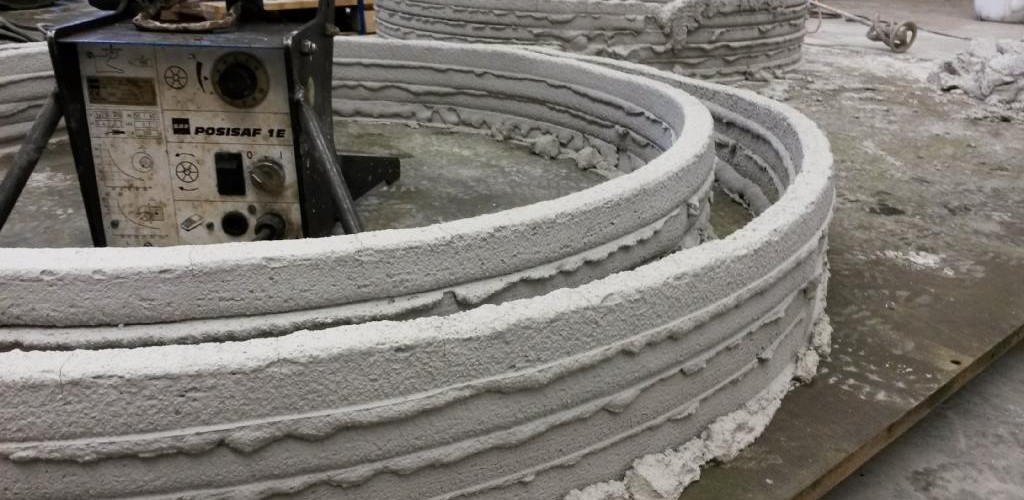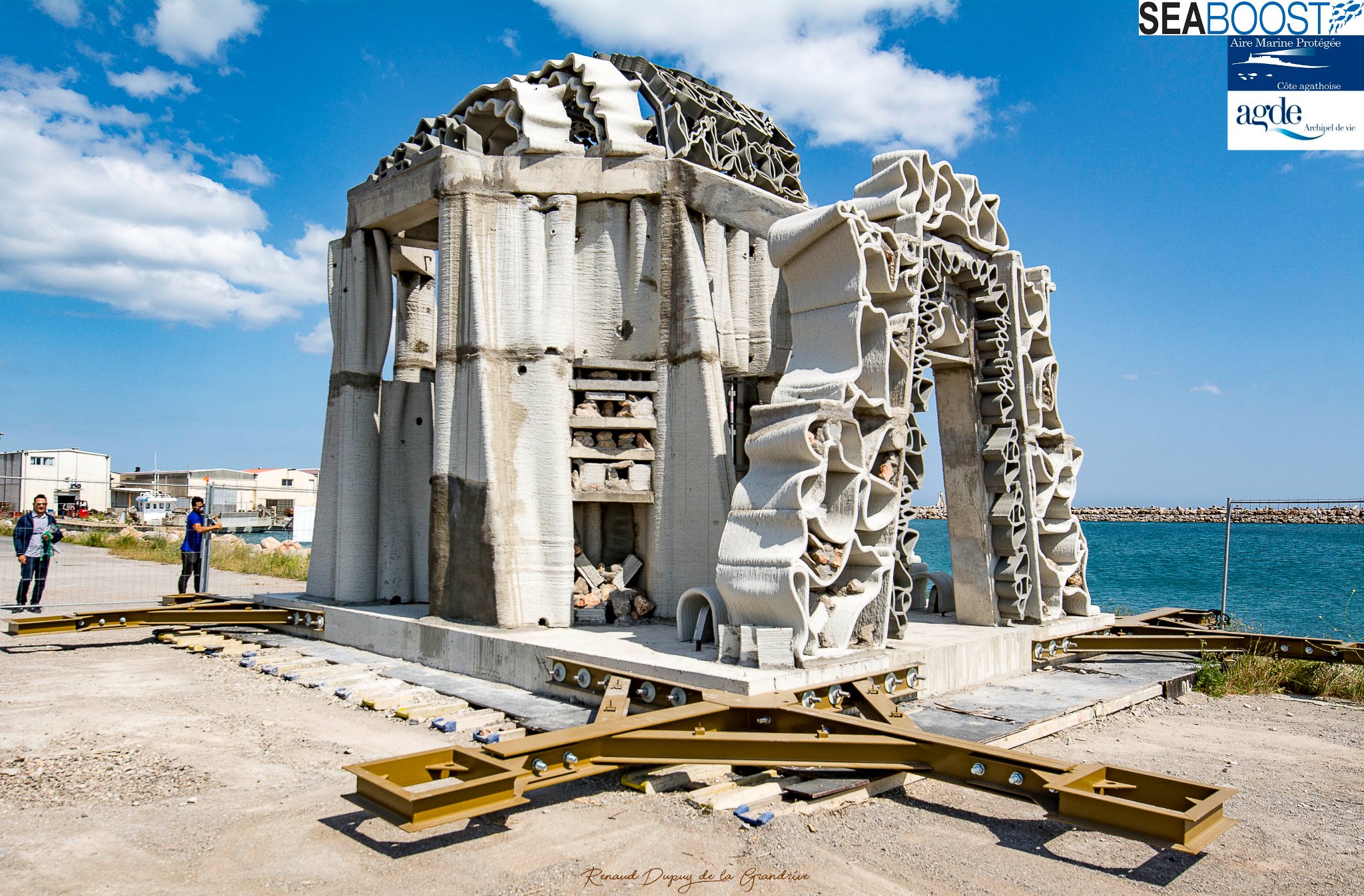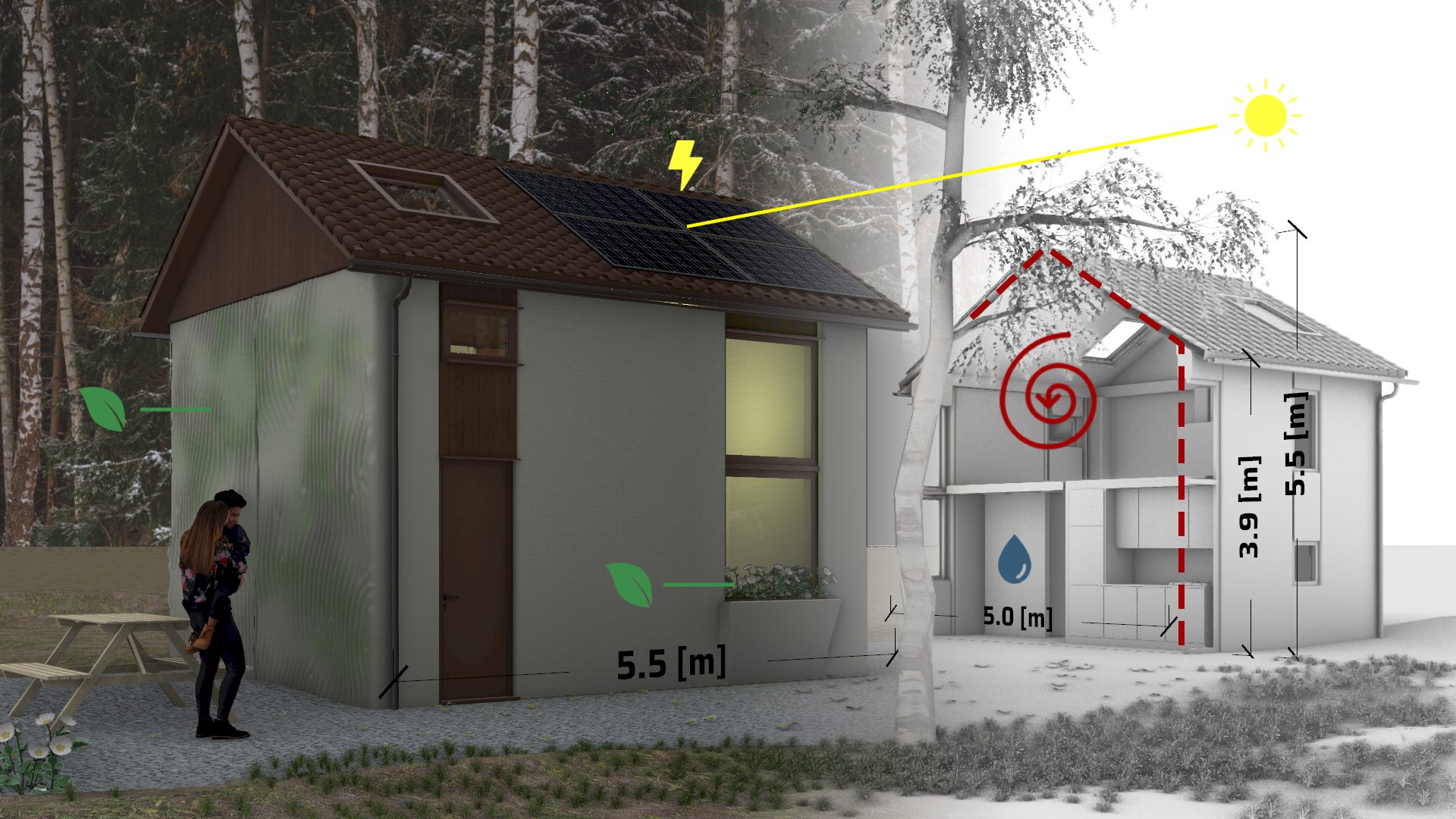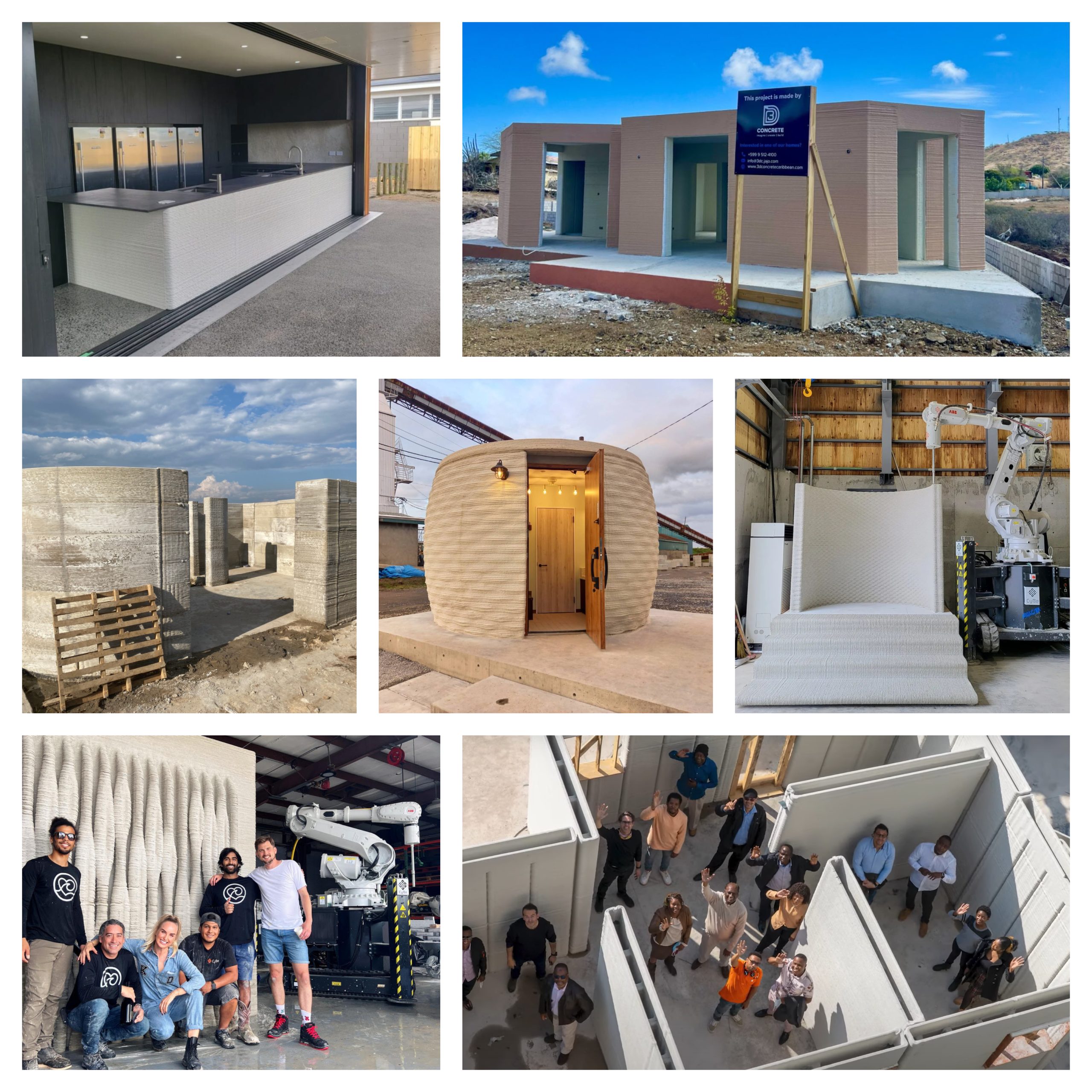01/11/2023: CyBe Construction, one of the first 3D concrete printing companies, celebrates 10 years of innovation and sustainability. After effectively creating the 3D concrete printing industry over the last decade, the company has now achieved global recognition, thanks to its excellence in additive manufacturing. Staying true to its vision of improving the world, CyBe plans to commission a fully automated housing factory by 2024 to create modular homes in a quick, affordable, and sustainable manner.
The Original 3D Concrete Printing Company
CyBe Construction was established 10 years ago by Berry Hendriks, in November 2013. At the time, Hendriks was the first to introduce 3D concrete printing to the construction industry. Back then, additive manufacturing was just a glimpse of what it is today. Arguably, the technique hadn’t even reached its infancy, as it was still in its very early stages of development. Little to no research was available, and 3D concrete printing was only attempted by a select group of hobbyists and scientists working with makeshift machines. Moreover, it was nearly impossible to print conventional concrete on concrete, as the material took several hours to reach a sufficient density to print the next layer on. It’s no surprise that virtually everyone who heard about the technique believed that 3D concrete printing had no future and told Hendriks that starting a 3DCP company would be impossible. Despite these challenges, Hendriks persisted and endeavored to do so anyway. His efforts paid off: after successfully finishing the first prints with a home-welded machine, CyBe Construction was born. The company quickly continued to develop hardware, software, and materials for 3D concrete printing, and more people began to recognize the value of professional additive manufacturing. Over the years, more and more 3DCP companies followed in our footsteps, effectively leading to the creation of the 3DCP market.
100 Year Old Legacy
Hendriks had the necessary experience in the construction industry. Growing up in the 100-year-old construction company Hendriks Bouw, he was running around construction sites since he was just a little boy. Being involved in every aspect of construction from a young age, Berry Hendriks knew exactly what was wrong in modern construction. More importantly, he also had ideas on how to improve it. With a vision for a better society, following in the legacy of Hendriks Bouw, CyBe Construction was founded. With a goal to build quickly, affordably, and ecologically, Berry Hendriks established the company with a vision to positively impact the world. This vision was nurtured over the years, and even after scaling up the company from just a few people to a 40-employee business, this aim for a better world still forms the DNA of CyBe to this day.

10 Years of Achievements
In the years following its founding, CyBe Construction focused on 3DCP innovation and continued its constructive efforts. They proceeded to develop their material, hardware, and software for 3D concrete printing, and in 2015, they secured their first customers and print jobs. A year later, in 2016, CyBe introduced its first mobile printer: The CyBe Robot Crawler. More projects were printed, and the first mobile printer was sold in 2017 to a partner in Japan. By 2021, they had already completed a multitude of international 3DCP projects, spanning from Italy to Saudi Arabia and the United Arab Emirates. They had developed their proprietary software and material and had designed a range of mobile printers. It was time for something new: The CyBe Gantry. This large-scale, stationary 3D printer was designed for the precise printing of modular, finished apartments in a factory setting. This new printer paved the way for prefabricated construction and, with it, for LyVe: an affordable and sustainable housing concept based on modular, on-site connected structures. In 2023, the LyVe Cooperation opened its doors, as did the company’s U.S. home base, CyBe Florida LLC. Today, CyBe Construction has achieved a global presence with a worldwide network of partners and completed print jobs all over the globe. Offering a wide range of distinct 3D printers, they provide the perfect solution for every construction challenge. Their software has undergone 10 years of development, resulting in the perfect designing and operating tool for additive manufacturing. Furthermore, they have made significant strides in optimizing sustainability over the years: with their material boasting a 90% reduction in waste and a 32% reduction in CO2 emissions, CyBe constructs affordable housing with a minimal carbon footprint. Engaging in projects like artificial reef and Living Seawalls construction, the company also actively contributes to our planet’s well-being. CyBe Construction stayed true to its mission to change the world for the better, and can look back on its 10 years of achievements with a sense of accomplishment.

The Future of CyBe
CyBe Construction has big ambitions for the future, all derived from 10 years of experience with 3D printing technology. Though these future plans might be significant, they plan to start with something small, tiny even. Their first planned expansion is the development of LyVe Tiny Houses: affordable and sustainable tiny homes produced under their ‘LyVe’ label. With their experience in using 3D concrete printing for projects ranging from some of the largest 3D print projects in the world to the smallest planters and artworks, building tiny homes won’t be too complicated. Building on these years of experience, the company is able to construct affordable tiny houses in a fast and sustainable way. The production method of these LyVe Tiny Houses is prone to some developments too: leveraging the new CyBe Gantry Robot, they will start utilizing Prefabricated Prefinished Volumetric Construction (PPVC). PPVC is a modular construction method in which the modules will be fully finished in the production facility, to be installed at the construction site. This innovative construction method will be applied to launch their fully automated housing factory, which will be commissioned alongside their current 3D printer factory. By combining PPVC with 3D concrete printing in this home factory, CyBe is able to produce LyVe Tiny Houses entirely carbon-neutral within a matter of days, with a cost savings of approximately 30%. They plan to use the experience with the tiny houses to quickly scale up to family homes and apartment complexes. By persisting to innovate, CyBe Construction is prepared to proceed on its journey of continuous growth and is getting ready for the next decade of achievements.

Subscribe to our Newsletter
3DPresso is a weekly newsletter that links to the most exciting global stories from the 3D printing and additive manufacturing industry.






















